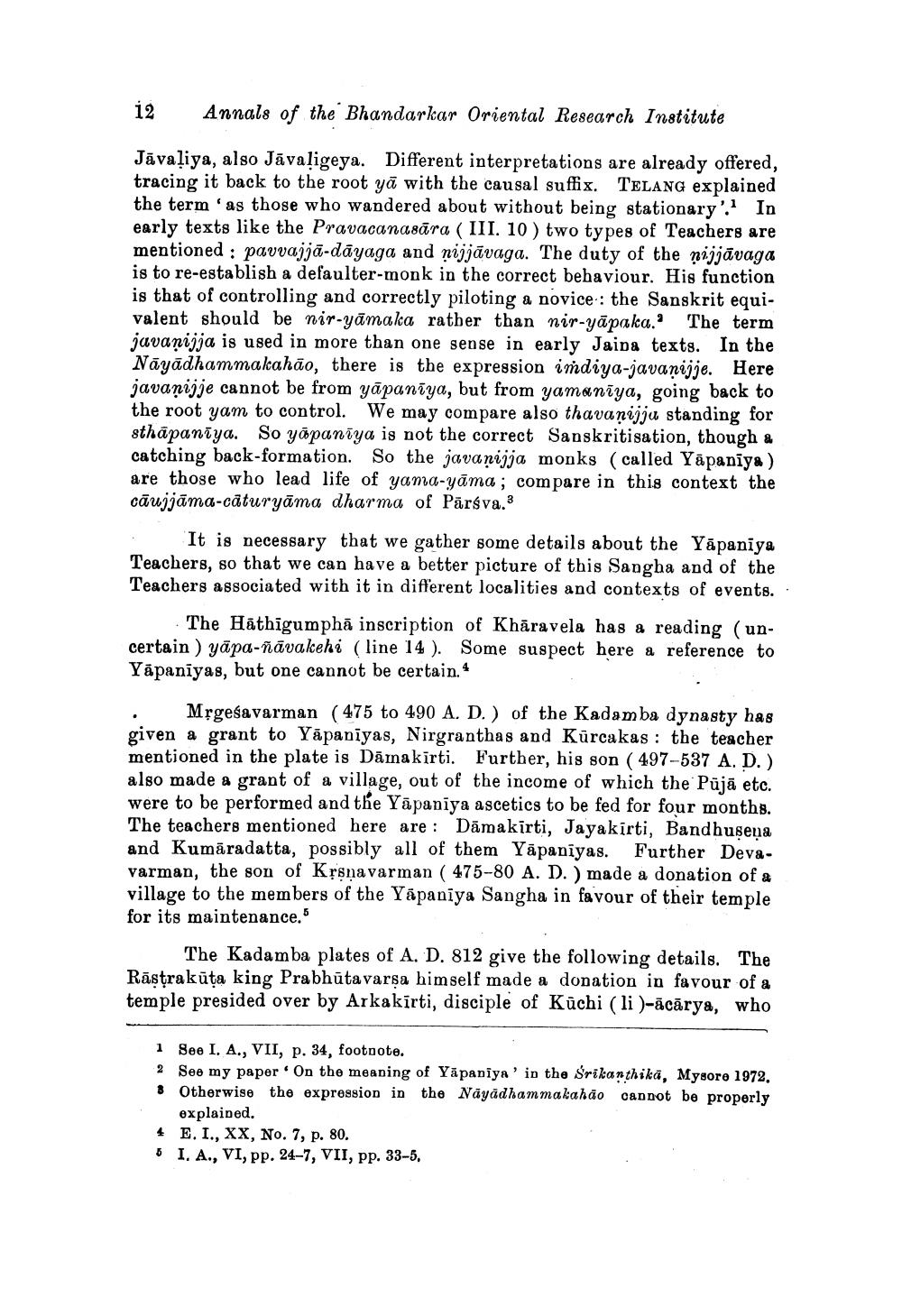Book Title: More Light On Yapaniya Sangha Author(s): A N Upadhye Publisher: A N Upadhye View full book textPage 5
________________ 12 Annals of the Bhandarkar Oriental Research Institute Jāvaliya, also Jāvaligeya. Different interpretations are already offered, tracing it back to the root yā with the causal suffix. TELANG explained the term 'as those who wandered about without being stationary'. In early texts like the Pravacanasāra (III. 10 ) two types of Teachers are mentioned : pavvajjā dāyaga and nijjāvaga. The duty of the nijjāvaga is to re-establish a defaulter-monk in the correct behaviour. His function is that of controlling and correctly piloting a novice : the Sanskrit equivalent should be nir-yāmaka rather than nir-yāpaka. The term javanijja is used in more than one sense in early Jaipa texts. In the Nāyādhammakahāo, there is the expression indiya-javanijje. Here javanijje cannot be from yāpanīya, but from yamaniya, going back to the root yam to control. We may compare also thavanijju standing for sthapanīya. So yõpaniya is not the correct Sanskritisation, though a catching back-formation. So the javanijja monks (called Yāpaniya) are those who lead life of yama-yāma; compare in this context the cāujjāma-caturyāma dharma of Pārsva. 3 It is necessary that we gather some details about the Yāpaniya Teachers, so that we can have a better picture of this Sangha and of the Teachers associated with it in different localities and contexts of events.. The Hāthīgumphā inscription of Khāravela has a reading (uncertain ) yāpa-ñāvakehi (line 14). Some suspect here a reference to Yåpaniyas, but one cannot be certain. Mrgesavarman ( 475 to 490 A. D.) of the Kadamba dynasty has given a grant to Yāpaniyas, Nirgranthas and Kūrcakas : the teacher mentioned in the plate is Dāmakīrti. Further, his son ( 497-537 A. D.) also made a grant of a village, out of the income of which the Pūjā etc. were to be performed and the Yāpaniya ascetics to be fed for four months. The teachers mentioned here are : Dāmakīrti, Jayakīrti, Bandhusena and Kumāradatta, possibly all of them Yāpaniyas. Further Devavarman, the son of Krsnavarman ( 475-80 A. D. ) made a donation of a village to the members of the Yāpanīya Sangha in favour of their temple for its maintenance.5 The Kadamba plates of A. D. 812 give the following details. The Rāstrakūta king Prabhūta varsa himself made a donation in favour of a temple presided over by Arkakīrti, disciple of Kūchi (li )-ācārya, who 1 See I, A., VII, p. 34, footnote. 2 See my paper on the meaning of Yăpaniya' in the Srikanthikā, Mysore 1972. 8 Otherwise the expression in the Nāyādhammakahão cannot be properly explained 4 E.I., XX, No. 7, p. 80. 6 I. A., VI, pp. 24-7, VII, pp. 33-5,Page Navigation
1 ... 3 4 5 6 7 8 9 10 11 12 13 14 15
